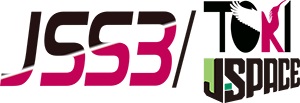Computational Study on Aerodynamic Characteristics of Reusable Slender Body Configurations
JAXA Supercomputer System Annual Report February 2022-January 2023
Report Number: R22EACA12
Subject Category: JSS Inter-University Research
- Responsible Representative: Keiichi Kitamura, Associate Professor, Yokohama National University
- Contact Information: Tomohiro Mamashita(mamashita-tomohiro-nj@ynu.jp)
- Members: Keiichi Kitamura, Tomohiro Mamashita, Kouya Nakahara, Yuta Tsukamoto
Abstract
There is an urgent need for the practical application of reusable launch vehicles in order to reduce the cost of space transportation. It is necessary to understand the aerodynamic characteristics of reusable launch vehicles during return flight for safe landing, because they use the aerodynamic drag for deceleration and turnover maneuver. In this study, the aerodynamic characteristics of the vehicle during the return flight are investigated for the practical use of reusable sounding rockets. To this end, we conducted wind tunnel tests and numerical calculations assuming low Mach number flow during the return flight. The calculations were then validated through a comparison of the experimental results with the calculated results. Moreover, we studied the effect of the difference in Reynolds number between the wind tunnel test and actual flight on the aerodynamic characteristics and the aerodynamic devices to improve the return flight performance.
Reference URL
N/A
Reasons and benefits of using JAXA Supercomputer System
We performed numerical fluid calculations to understand the aerodynamic characteristics of a reusable launch vehicle during its return flight. In particular, to reproduce the flow fields at high angles of attack (approximately 60-120 degrees), it is necessary to numerically resolve the small eddies that are generated near the vehicle. This requires numerical calculations with fine computational grids, and JSS3 is used for this purpose. This large-scale calculation provided results that were close to the results of the corresponding wind tunnel test. Furthermore, by analyzing the results through visualization, we were able to clarify the spatial flow field, which is difficult to obtain in a wind tunnel test.
Achievements of the Year
We performed numerical fluid calculations using the configuration of the reusable experimental vehicle “RV-X” in the wind-tunnel-test scale (Reynolds number: 6.6E+5) and actual-flight scale (Reynolds number: 9.0E+6). In this year, we mainly analyzed the difference of flow field between the two scales at angles of attack of 90, 150-180 degrees. It is clarified that the separation position shifts downstream at all angles of attack because of the large Reynolds number of the actual-flight scale. Figure 1 shows visualization of the surface pressure coefficient distribution and surface streamlines at an angle of attack of 90 degrees as a representative case. Focusing on the nose cone, the separation positions of the two scales are significantly different due to the Reynolds number effect. This results in lower surface pressure on the leeward side of the nose cone in the actual-flight scale. In addition, the resultant pitching moment coefficient in the actual-flight scale was 61.4% larger than that in the wind-tunnel-test scale.

Fig.1: Visualization of surface pressure coefficient distribution and surface streamlines at 90 degree angle of attack viewed from the port side. The black lines in the figure schematically show the main separation positions. a) wind-tunnel-test scale (Reynolds number: 6.6E+5), b) actual-flight scale (Reynolds number: 9.0E+6).
Publications
– Peer-reviewed papers
– Tomohiro Mamashita, Tomotaro Muto, Keiichi Kitamura, Satoshi Nonaka, “Numerical Analysis on Axial Force Charactaristics of Reusable Launch Vehicle at 150-180 degrees Angles-of-Attack,” Transactions of the Japan Society for Aeronautical and Space Sciences, in press.
– Oral Presentations
– Kouya Nakahara, Keiichi Kitamura, Satoshi Nonaka, “Close-Coupled-Delta-Wing Type Aerodynamic Device for L/D Improvement of Slender Body,” 53rd Fluid Dynamics Conference/39th Aerospace Numerical Simulation Technology Symposium (in Japanese), 2022.
– Yuta Tsukamoto, “Numerical Research on Vortex Generator/Boundary-Layer-Interactions over a Supercritical Airfoil,” Proceedings of the 60th Aircraft Symposium (in Japanese), 2022.
– Kouya Nakahara, Keiichi Kitamura, Satoshi Nonaka, “Numerical Study on L/D Improvement of Slender Body by Close-Coupled-Delta-Wing-Type Aerodynamic Devices,” The 2022 Asia-Pacific International Symposium on Aerospace Technology, 2022.
– Tomohiro Mamashita, Ryota Tamai, Tomotaro Muto, Keiichi Kitamura, Satoshi Nonaka, “Actual Flight Scale Numerical Analysis of Experimental Reusable Vehicle RV-X at 90 degree Angle-of-Attack,” the Space Sciences and Technology Conference (in Japanese), 2022.
– Poster Presentations
– Yuta Tsukamoto, Keiichi Kitamura, “Improvements of Vortex Generator for Transonic Buffet Suppression over Supercritical Airfoil,” Nineteenth international conference on flow dynamics (ICFD), 2022.
Usage of JSS
Computational Information
- Process Parallelization Methods: MPI
- Thread Parallelization Methods: N/A
- Number of Processes: 480 – 3840
- Elapsed Time per Case: 50 Hour(s)
JSS3 Resources Used
Fraction of Usage in Total Resources*1(%): 0.17
Details
Please refer to System Configuration of JSS3 for the system configuration and major specifications of JSS3.
| System Name | CPU Resources Used(Core x Hours) | Fraction of Usage*2(%) |
|---|---|---|
| TOKI-SORA | 3103929.79 | 0.14 |
| TOKI-ST | 81522.27 | 0.08 |
| TOKI-GP | 0.00 | 0.00 |
| TOKI-XM | 0.00 | 0.00 |
| TOKI-LM | 99290.90 | 6.65 |
| TOKI-TST | 3.87 | 0.00 |
| TOKI-TGP | 0.00 | 0.00 |
| TOKI-TLM | 0.00 | 0.00 |
| File System Name | Storage Assigned(GiB) | Fraction of Usage*2(%) |
|---|---|---|
| /home | 423.67 | 0.38 |
| /data and /data2 | 40980.00 | 0.32 |
| /ssd | 153.33 | 0.02 |
| Archiver Name | Storage Used(TiB) | Fraction of Usage*2(%) |
|---|---|---|
| J-SPACE | 28.18 | 0.12 |
*1: Fraction of Usage in Total Resources: Weighted average of three resource types (Computing, File System, and Archiver).
*2: Fraction of Usage:Percentage of usage relative to each resource used in one year.
ISV Software Licenses Used
| ISV Software Licenses Used(Hours) | Fraction of Usage*2(%) | |
|---|---|---|
| ISV Software Licenses(Total) | 3809.18 | 2.65 |
*2: Fraction of Usage:Percentage of usage relative to each resource used in one year.
JAXA Supercomputer System Annual Report February 2022-January 2023


